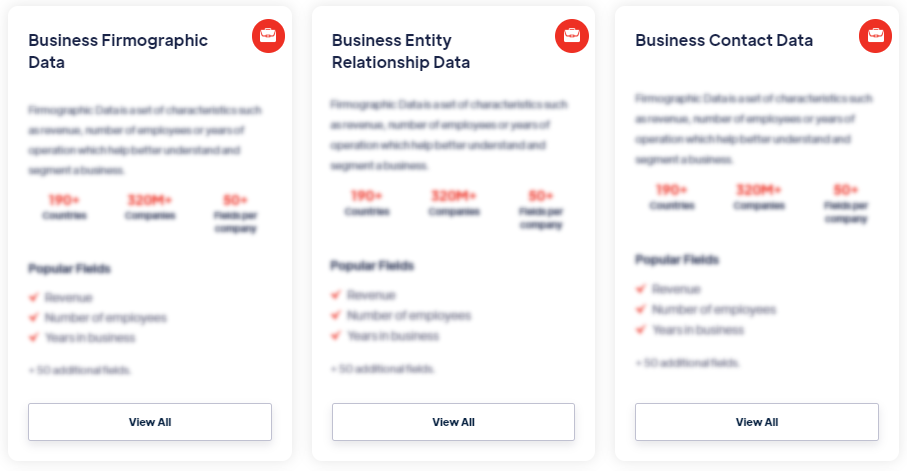Best
Wildlife Conservation Data
Products
Wildlife conservation data refers to information and records related to the conservation and management of wildlife species and their habitats. It includes data collected from various sources, such as research studies, monitoring programs, surveys, and citizen science initiatives, to assess the status, trends, and threats facing wildlife populations. Read more
Our Data Integrations


Request Data Sample for
Wildlife Conservation Data

Browse the Data Marketplace

Frequently Asked Questions
1. What is wildlife conservation data?
Wildlife conservation data refers to information and records
related to the conservation and management of wildlife species
and their habitats. It includes data collected from various
sources, such as research studies, monitoring programs, surveys,
and citizen science initiatives, to assess the status, trends,
and threats facing wildlife populations.
2. Why is wildlife conservation data important?
Wildlife conservation data is crucial for understanding the
state of biodiversity, identifying endangered species, assessing
population trends, and designing effective conservation
strategies. It helps in evaluating the impacts of human
activities, monitoring the effectiveness of conservation
interventions, and informing policies and practices aimed at
preserving and protecting wildlife and their ecosystems.
3. How is wildlife conservation data collected?
Wildlife conservation data is collected through various methods
depending on the species and research objectives. These can
include field surveys, camera trapping, radio telemetry, genetic
analysis, satellite tracking, acoustic monitoring, and citizen
science initiatives. Data collection efforts often involve
collaboration between scientists, conservation organizations,
and local communities.
4. What are the types of wildlife conservation data?
Wildlife conservation data includes information about the
distribution and abundance of species, population demographics,
habitat quality and fragmentation, species interactions,
migratory patterns, genetic diversity, and threats such as
habitat loss, poaching, pollution, and climate change. It may
also include data on protected areas, conservation actions, and
conservation policy frameworks.
5. How is wildlife conservation data analyzed?
Wildlife conservation data is analyzed using a range of
techniques and approaches. This can involve statistical analysis
to assess population trends, habitat modeling to identify key
areas for conservation, spatial analysis to map species
distributions, network analysis to understand ecological
interactions, and modeling techniques to predict the impacts of
conservation actions and climate change on wildlife populations.
6. What are the challenges in analyzing wildlife conservation
data?
Challenges in analyzing wildlife conservation data include data
limitations, such as incomplete or biased sampling, data quality
issues, and the need for interdisciplinary collaboration to
integrate data from multiple sources. Additionally, wildlife
conservation data often deals with complex ecological systems,
spatial and temporal scales, and uncertainties associated with
predicting population dynamics and ecosystem responses.
7. How is wildlife conservation data used?
Wildlife conservation data is used by conservation
practitioners, researchers, policymakers, and government
agencies to guide conservation planning and decision-making. It
informs the designation of protected areas, development of
species recovery plans, assessment of conservation status,
evaluation of conservation interventions, identification of
conservation priorities, and monitoring the effectiveness of
conservation actions.
